עברית: https://khirbetqana.com/2020/12/09/143/

Two years ago I toured in a site which we, Yodfat residents, call Hirbet Ghana. I haven't known a thing about this place.
As often happens and can't always be explained, I fell in love with it. Amazing views, ancient buildings, caves, cisterns and a general feeling of a less known and mysterious place.
In retrospect I can say that the place was researched quite a bit.
Click on image below for high-resolution map:
I then learned, from a nice Yodfat resident, that there are monks, which believe that it is here where Jesus did one of his miracles – turned the water into wine. This miracle is also known as the "wedding in Cana". The Bedouins replace Ch with Gh so Chana became Ghana.
Today, the 'Wedding Church' in Kfar Kana is related to this miracle.
The more I've learned about this place the more I understood that it is an interesting place and especially that it has a great historic value.
If you, like my engineer brother, don't have enough time to read everything then the highlights are:
– According to the Christian faith, Jesus made seven miracles. The first one is in the Cana wedding, where he turned the water into wine. It was done with six rock bowls.
– While the common belief is that the miracle happened in Kfar Kana, there is no doubt that until the Ottoman period (16th c.) the Christians and particularly the pilgrims believed that it happened in Hirbet Ghana.
– There is a cave in Hirbet Ghana. In this cave there is a large table with a cross. On this table there are large rock bowls. One bowl still stands today.
– During 2000 to 2008, professor Doug Edwards from Puget Sound university, lead a research excavation together with professor Moti Aviam from Kinneret academic institute. Many of the findings described in this blog are from the late professor's article: Hirbet Qana: from Jewist village to Chirstian pilgrim site (2001).

The table and bowl stood for almost 2000 years. The table was broken in the last few years.
And now for the smaller details (I'm not an archaeologist nor an academic personnel so forgive me for any inaccuracies).

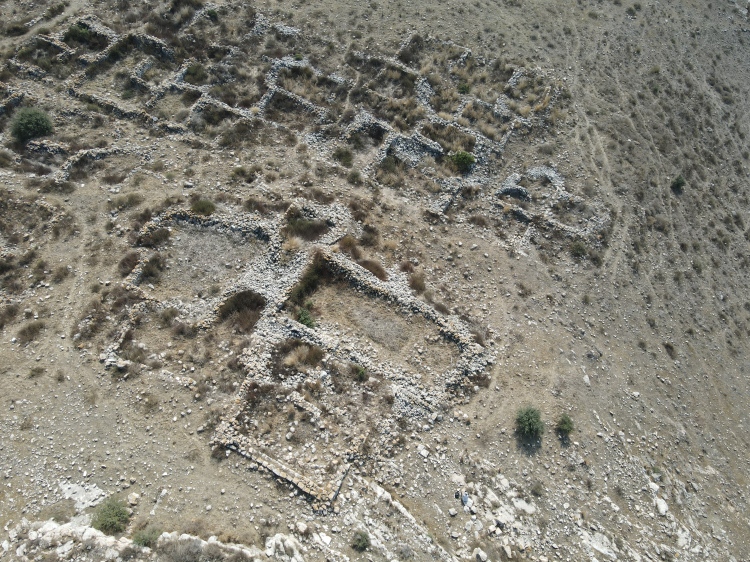
Background
Ghana is located in a strategic point. A high hill, north to Beit Netofa plain.
2 km east to ancient Yodfat. 3.5 km north to Tel Roma (remember this name) and 8 km north to Sephorris. The village is made of two parts, one on the top hill and one on the southern slope. It is possible that the southern part belongs to a later period.
Ghana's history is similar to Yodfat. It evolved as a Jewish village in the Hasmonean period .
There is a Miqveh at the top and there is a large building that might have served as synagogue.
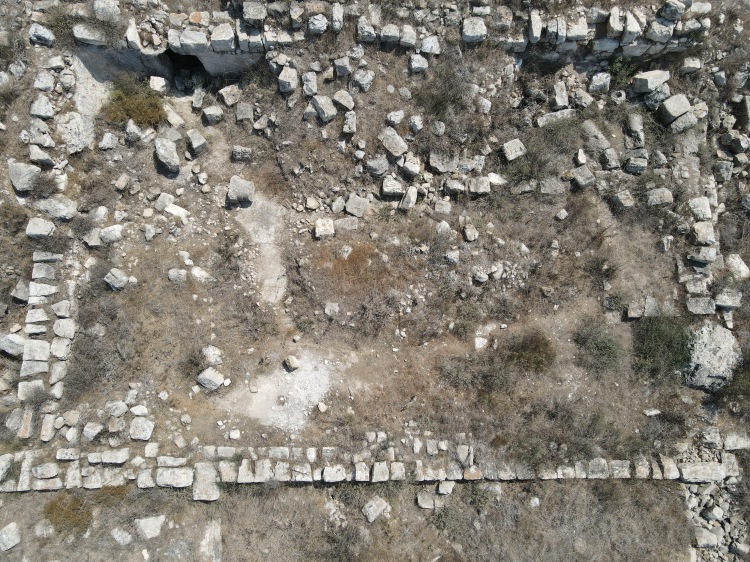
Unlike Yodfat, Ghana didn't participate in the great rebellion against the Romans (67 – 70 AD). While Yodfat village was ruined, life continued in nearby Ghana.
Ghana is a bit larger than Yodfat and we can estimate that at its peak there were around 1000 residents.
There is no natural water source in Ghana and it is full of water cisterns.
Based on ceramic analysis done by prof Edwards it had two peaks: in the early roman period (1st century) and in the byzantine period (4th – 6th centuries).
It is probable that the situation in Ghana became worst after the rebellion where it stopped being an important junction between Tiberia, Nazareth, Akko and Sephorris.

In 1910, E.W.G. Masterman, a missionary English doctor that lived in Israel, wrote an article that describes Ghana and concludes that Cana of Galilee is most probably Ghana.
Among his reasons:
– Yoseph Ben Matityahu writes in his book "life of Yosef", that he lived in a village in the Galilee named Cana near the Asochis plain. Archeologists match Asochis plain with Beit Netofa.
– Masterman quotes several pilgrims from the Crusaders period (12 -13 centuries):
Saewulf:

Based on the distance and direction between Nazareth and Cana and especially based on Kfar Roma which is half way, it is clear that he refers to Hirbet Ghana.
A quite amazing description by German monk named Burkhard from the same period:
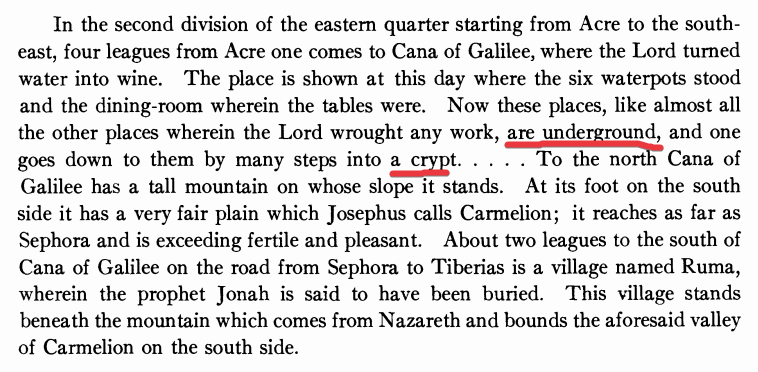
The description closely matches Ghana.
Masterman wasn't familiar with the now discovered pilgrim cave.
More quotes from Pilgrims who visited Khirbet Kana: https://khirbetqana.com/2021/07/31/wedding-at-cana-location-based-on-palestine-pilgrims-text-society/
Is this the graffiti he writes about? It is from the same period.
Is this the fountain, that is located not far from the cave?
Masterman explains that in the 17th c. an Italian monk and historian named Franciscus Quaresmius, was the one to decide the place of the first miracle. The monk chose Kfar Kana as Ghana was already deserted and was difficult to reach. Franciscus didn't reject the other option:
Posterior haec sententia mihi valde probabilis videtur (licet alteram rejicere non audeam) quoniam proximior Nazareth.
Google translation:
The second view is that it seems highly likely (though not daring to reject the other) for the nearest Nazareth.
There are at least four rooms inside the pilgrims cave. The first one with the table, bowl and graffiti is illustrated in prof Edwards article:
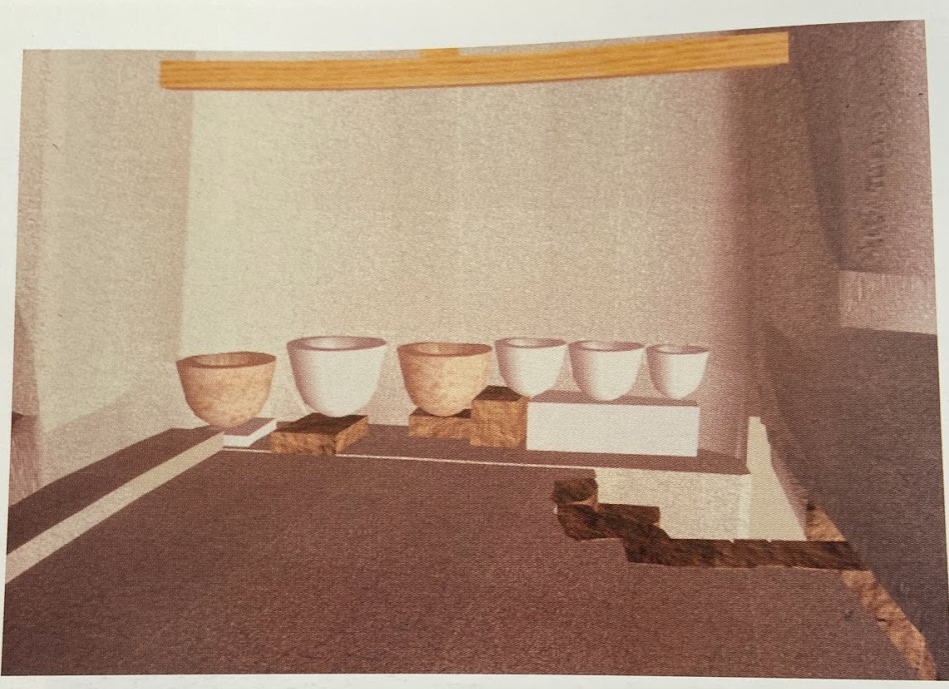
The holes for the wooden pole are clearly seen in the cave walls. It probably held a curtain. Other interesting artifacts were discovered, including a golden griffon (lion with wings and an eagle's beak.
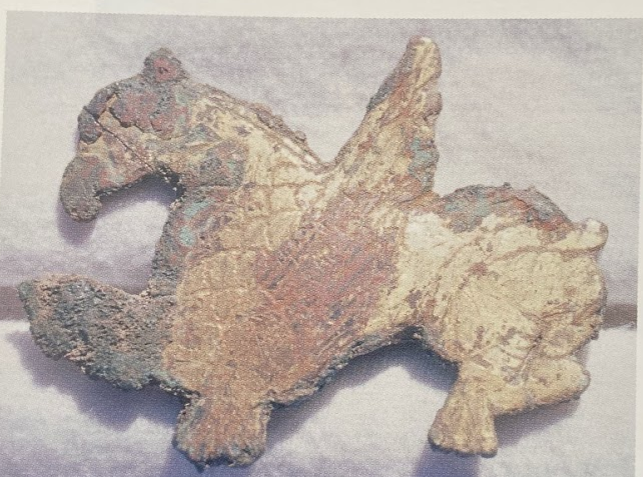
The other rooms weren't excavated.
That's it for today. I'm sure that there are many more surprises and interesting findings waiting for us in this place.
Update: Another stone bowl was discovered. Both bowls were taken by Israel Antiques Agency for restoration and reservation.
A few more pictures:
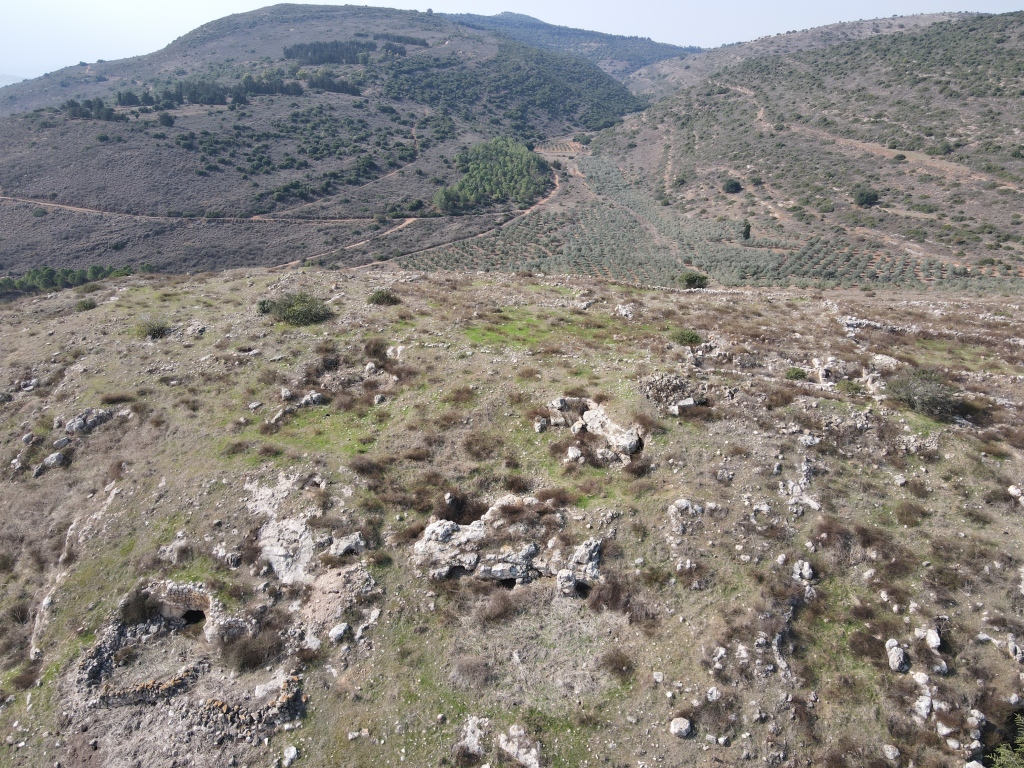
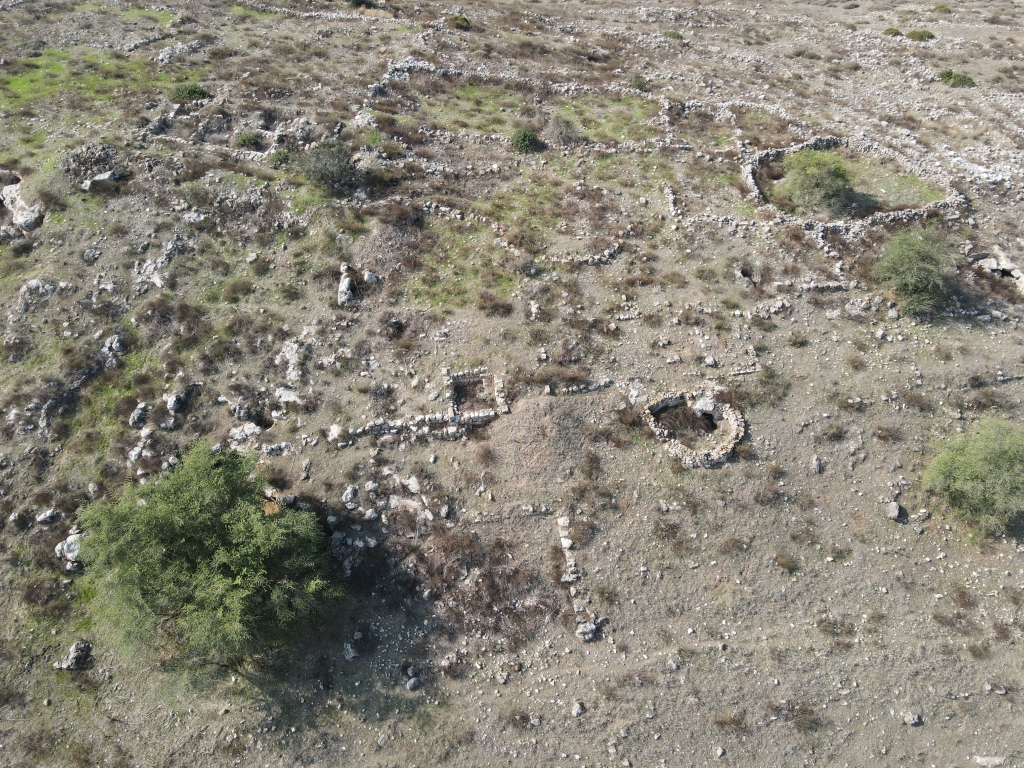
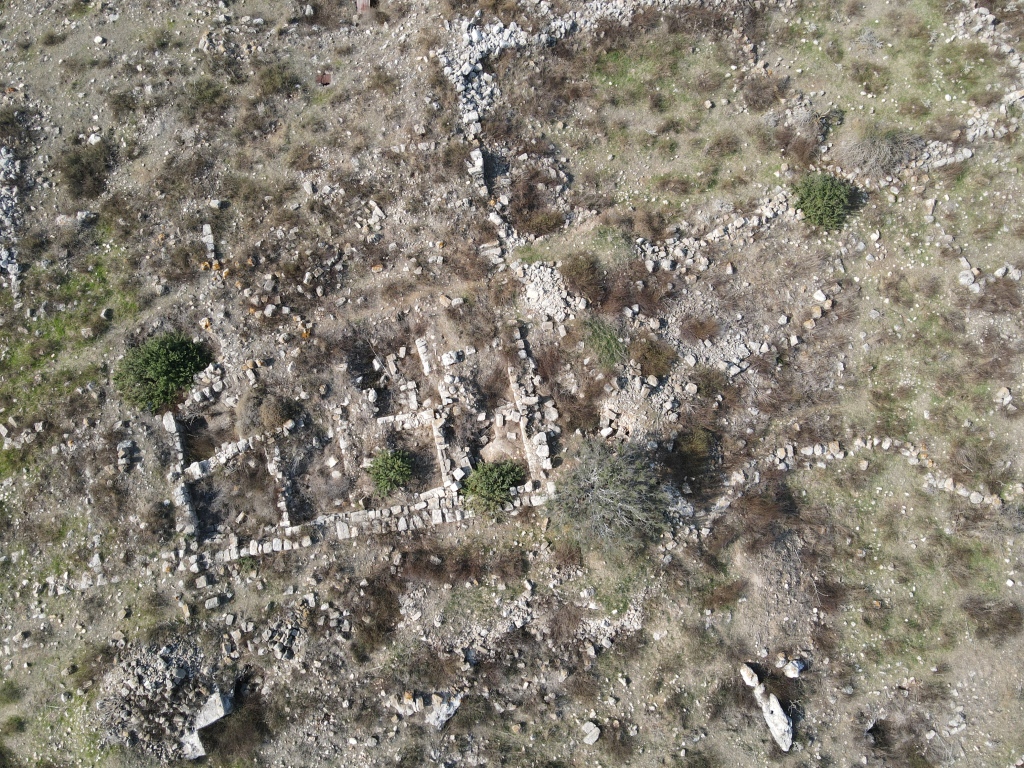

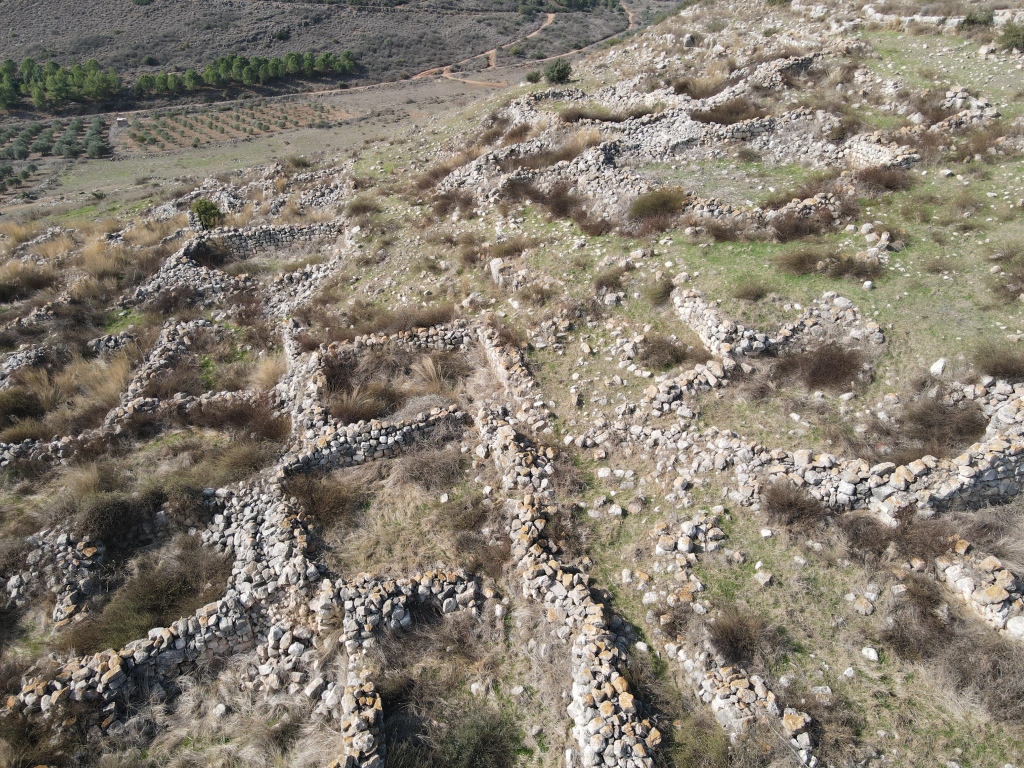
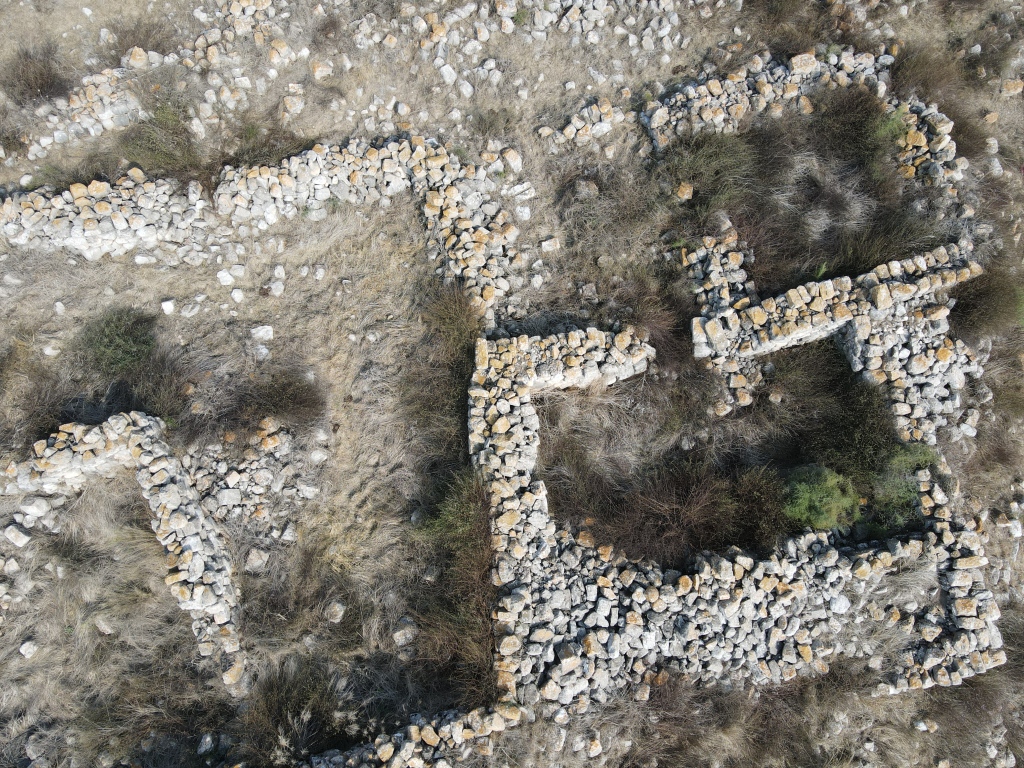
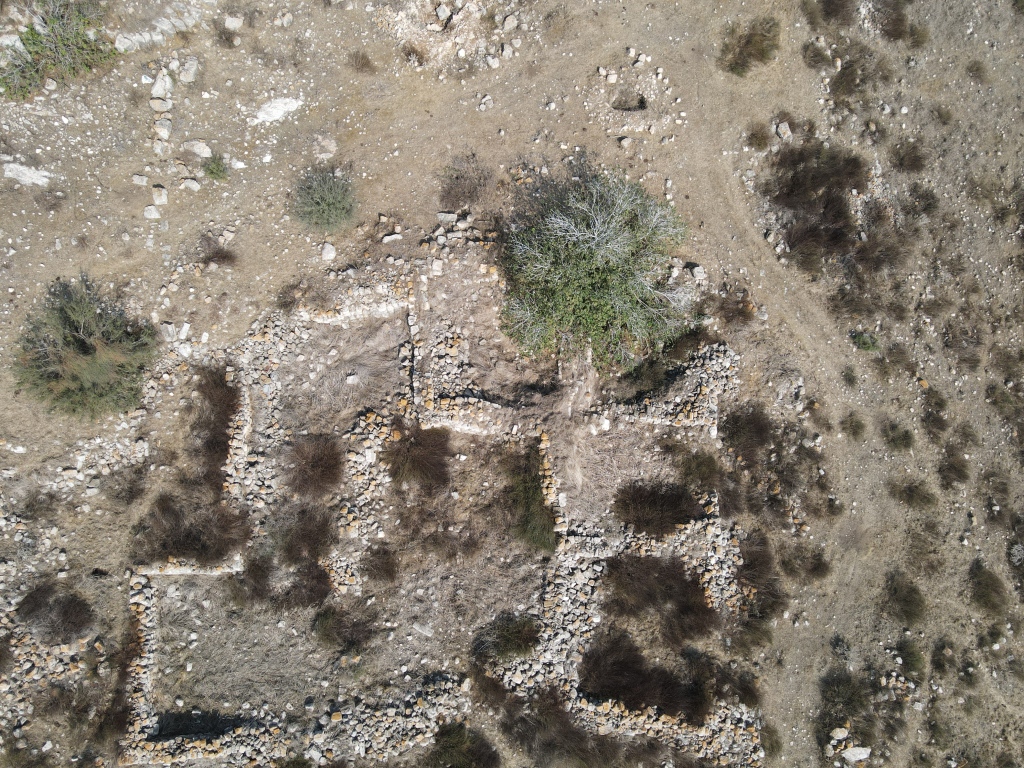
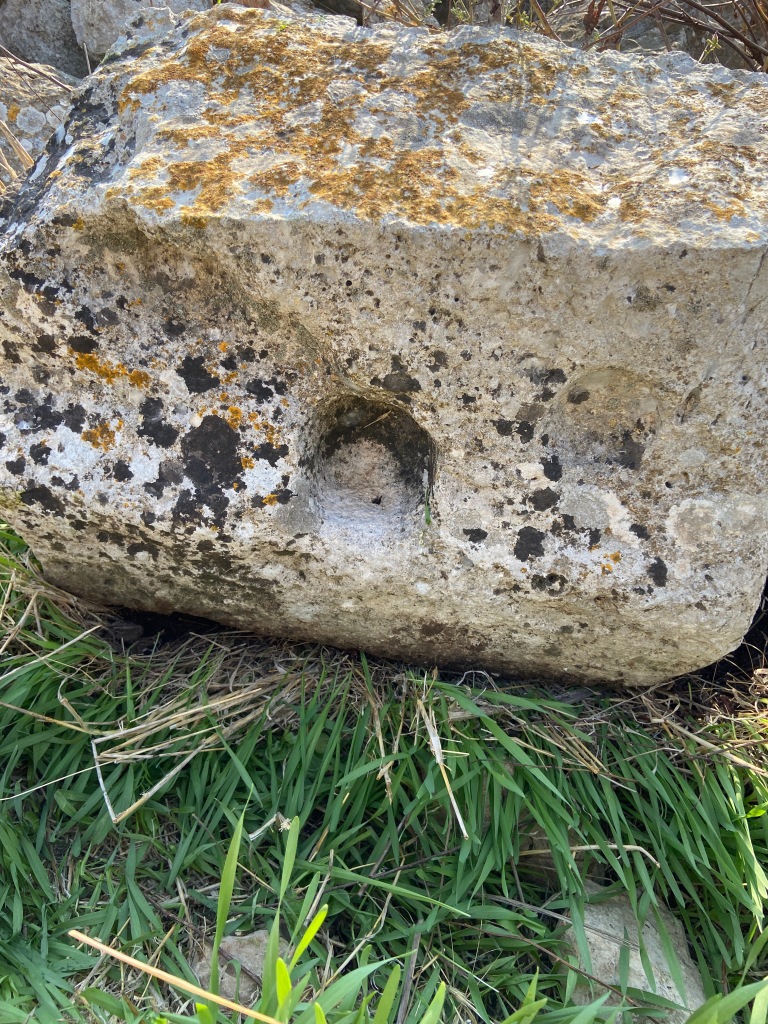

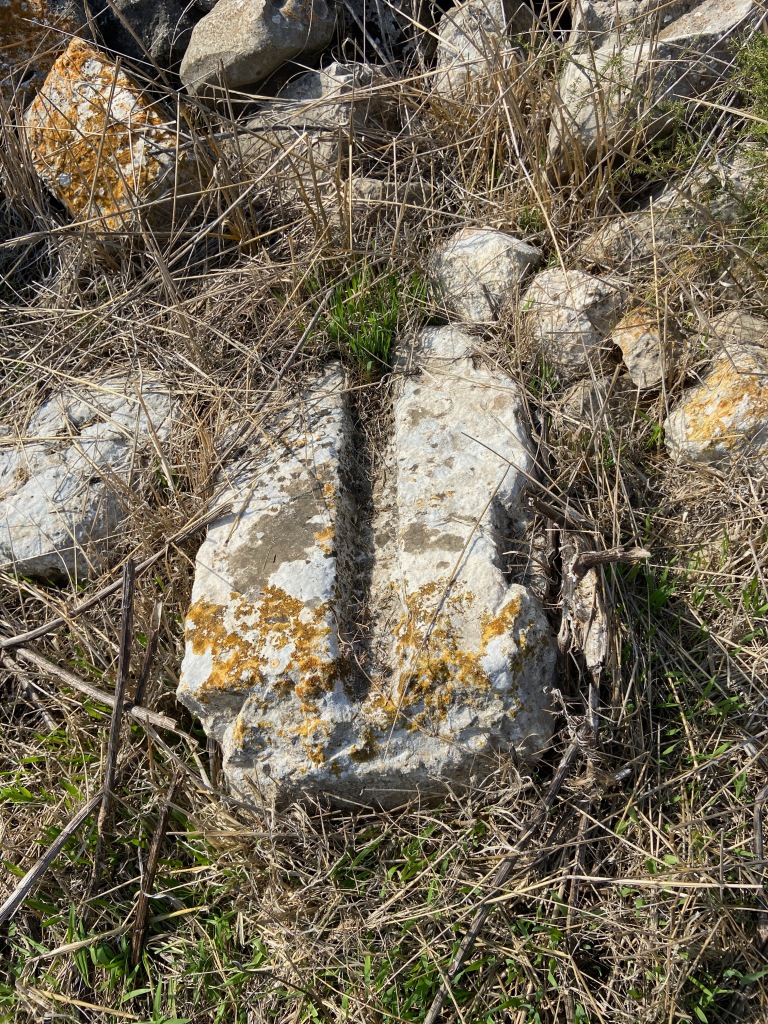
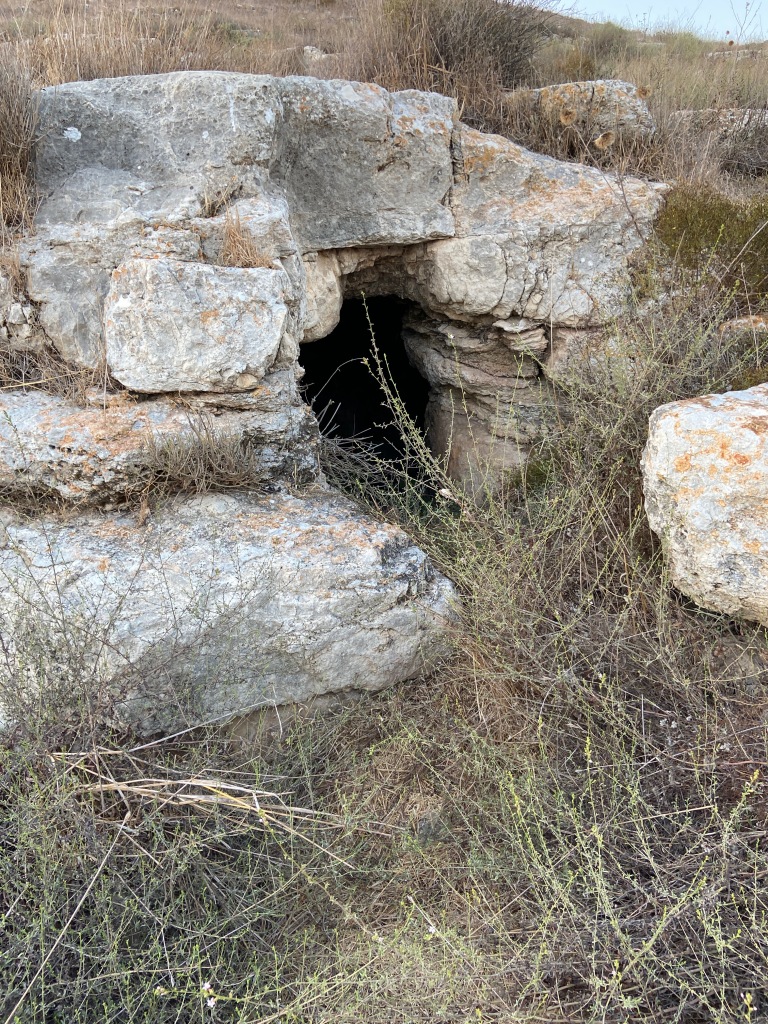
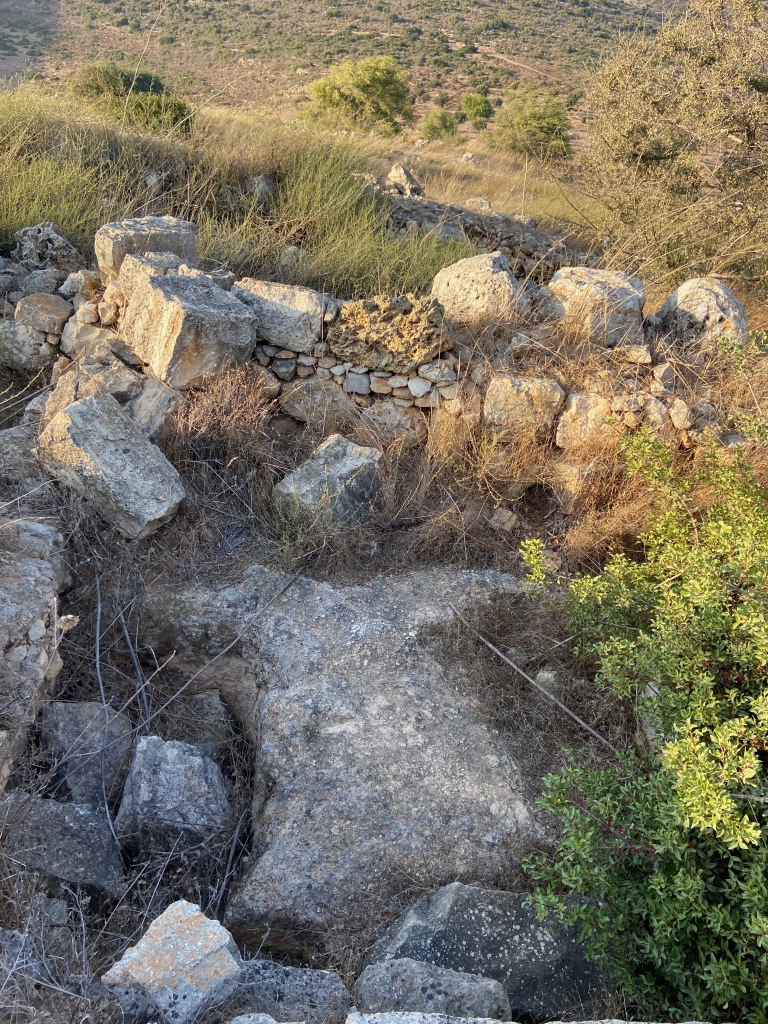
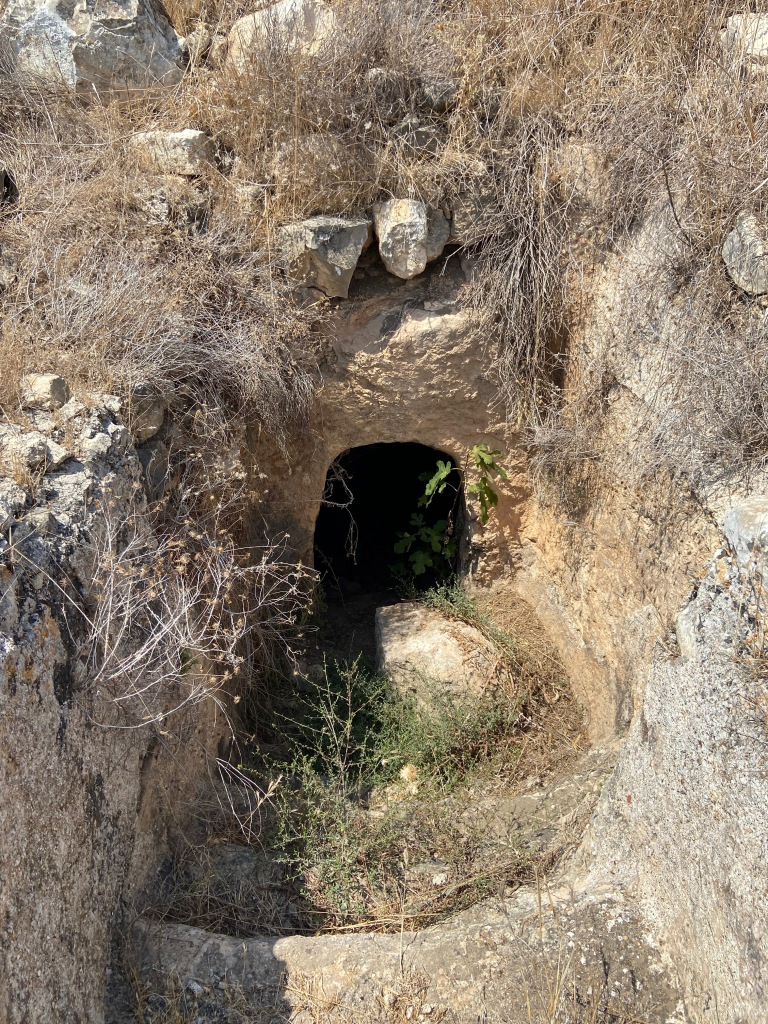
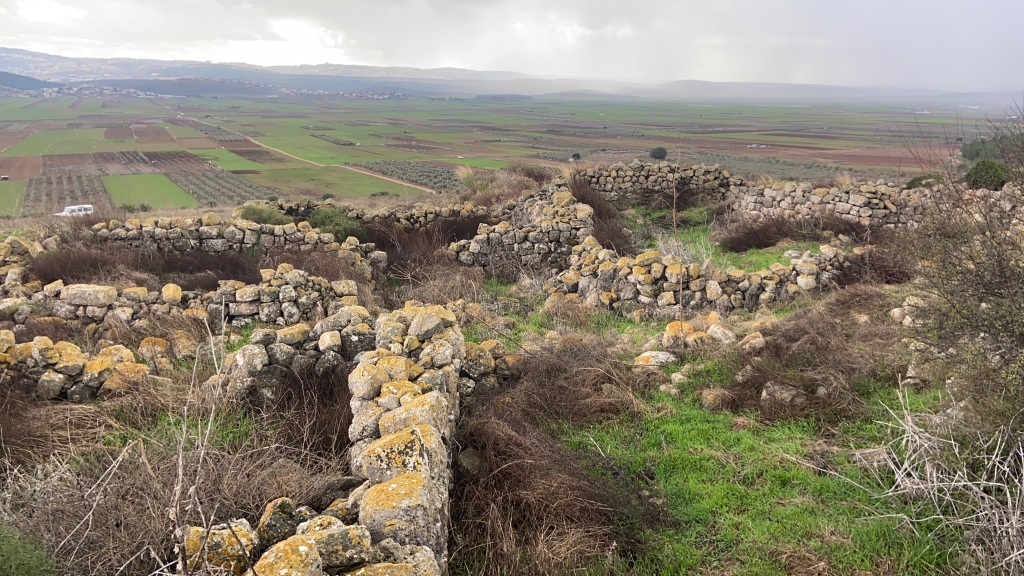
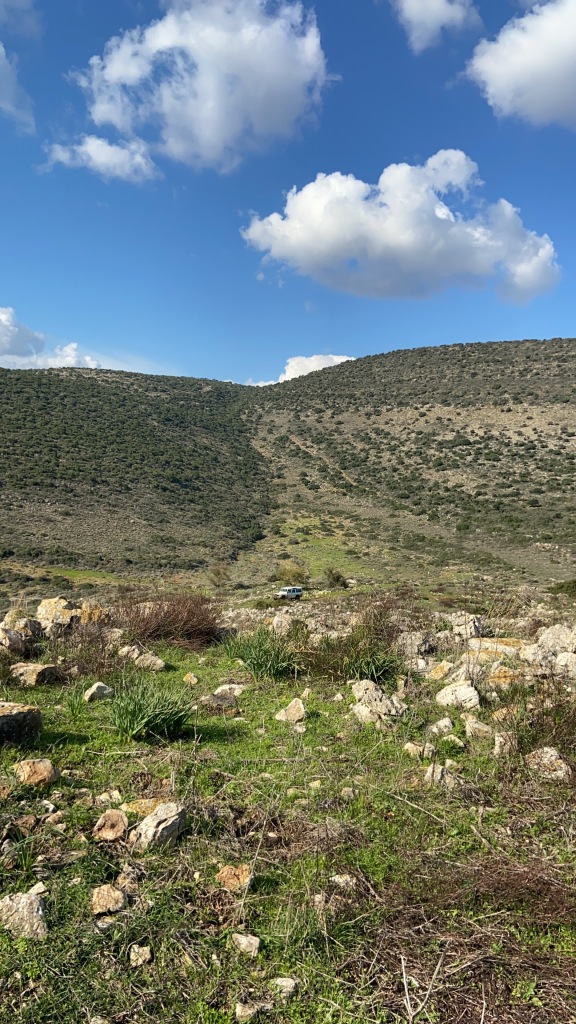
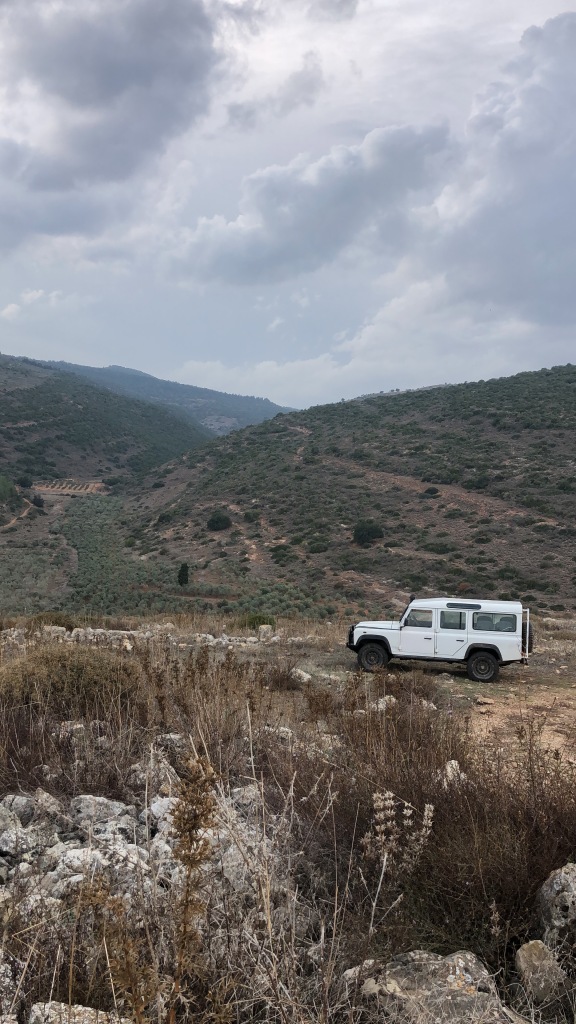
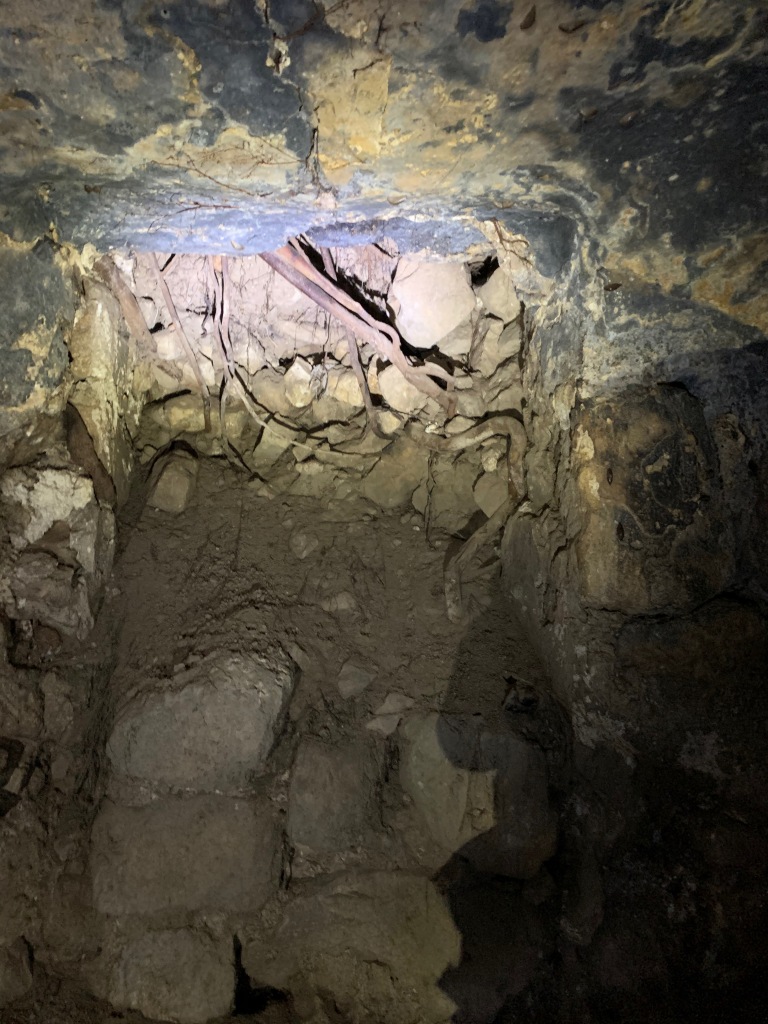
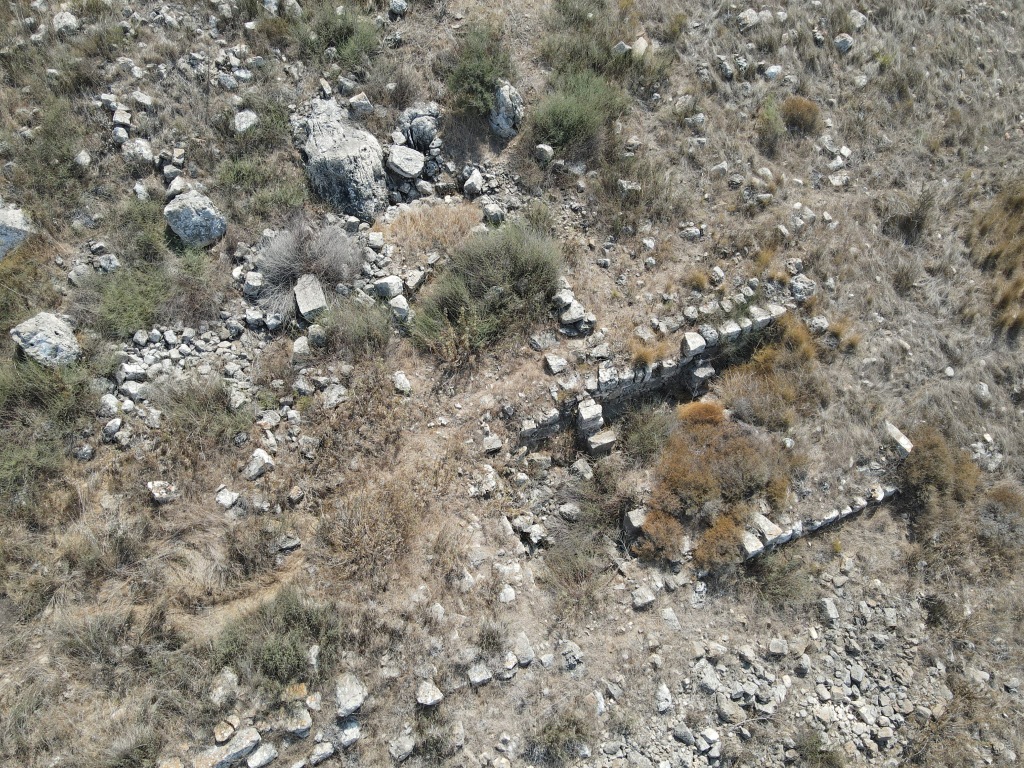
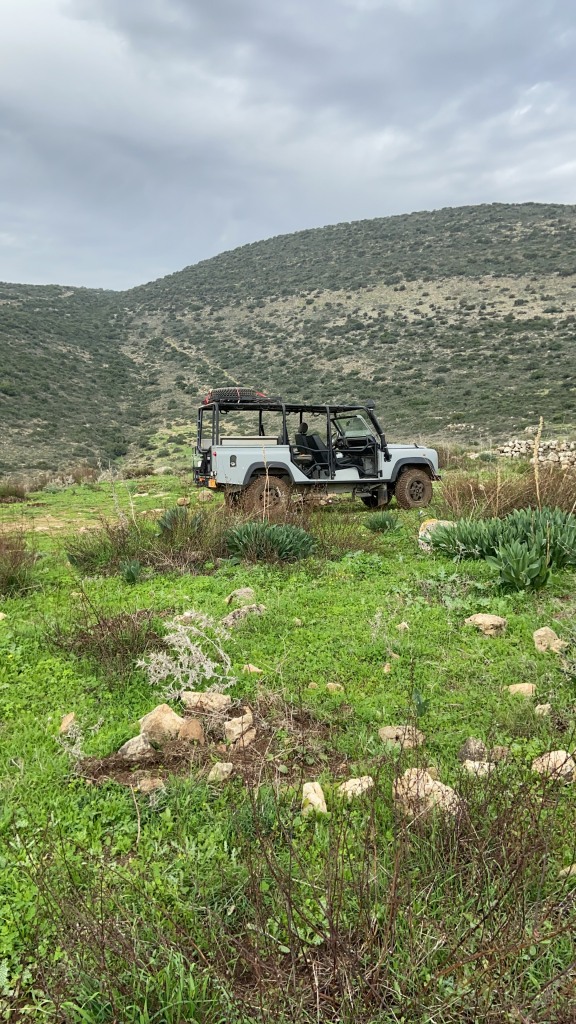
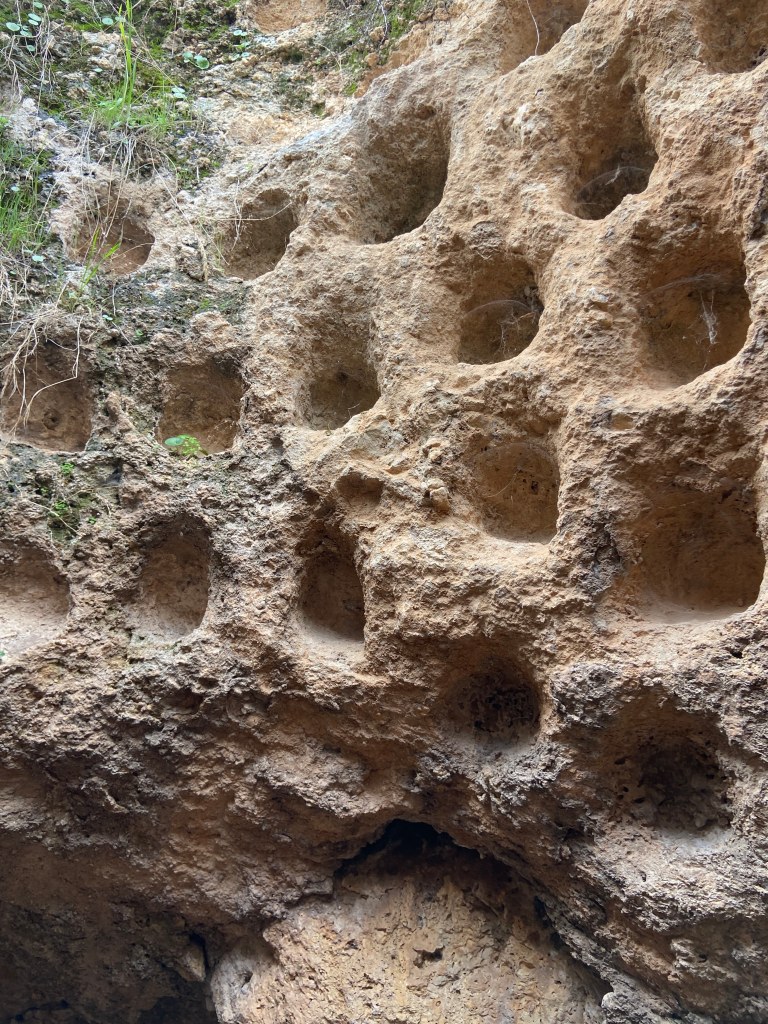
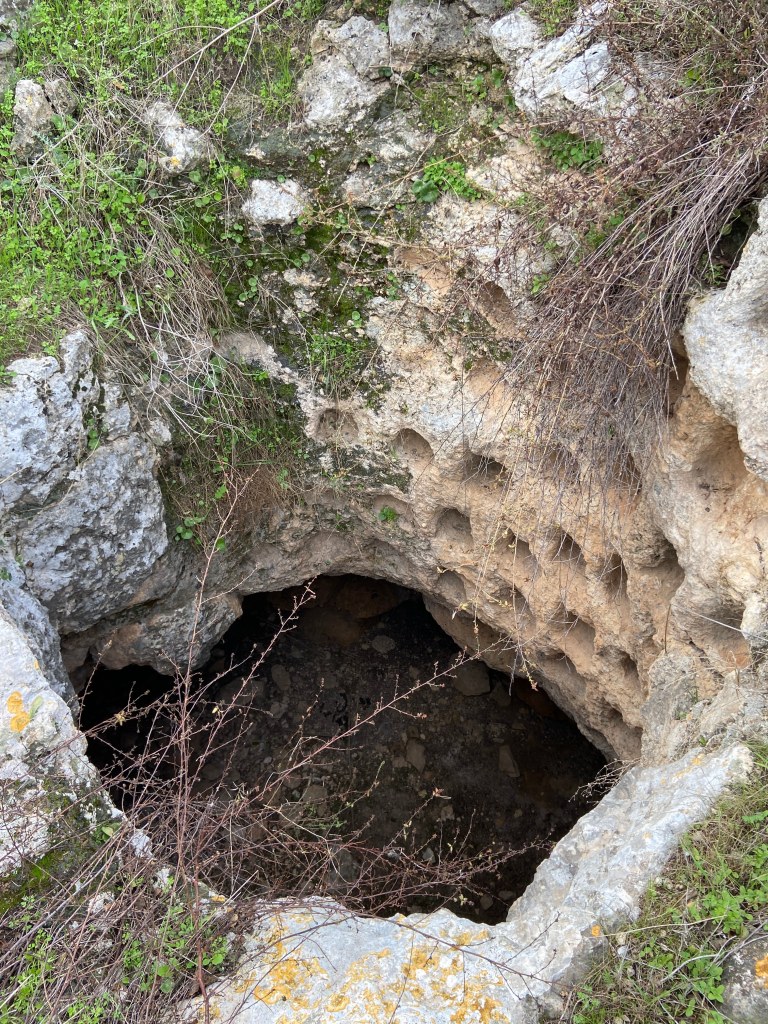
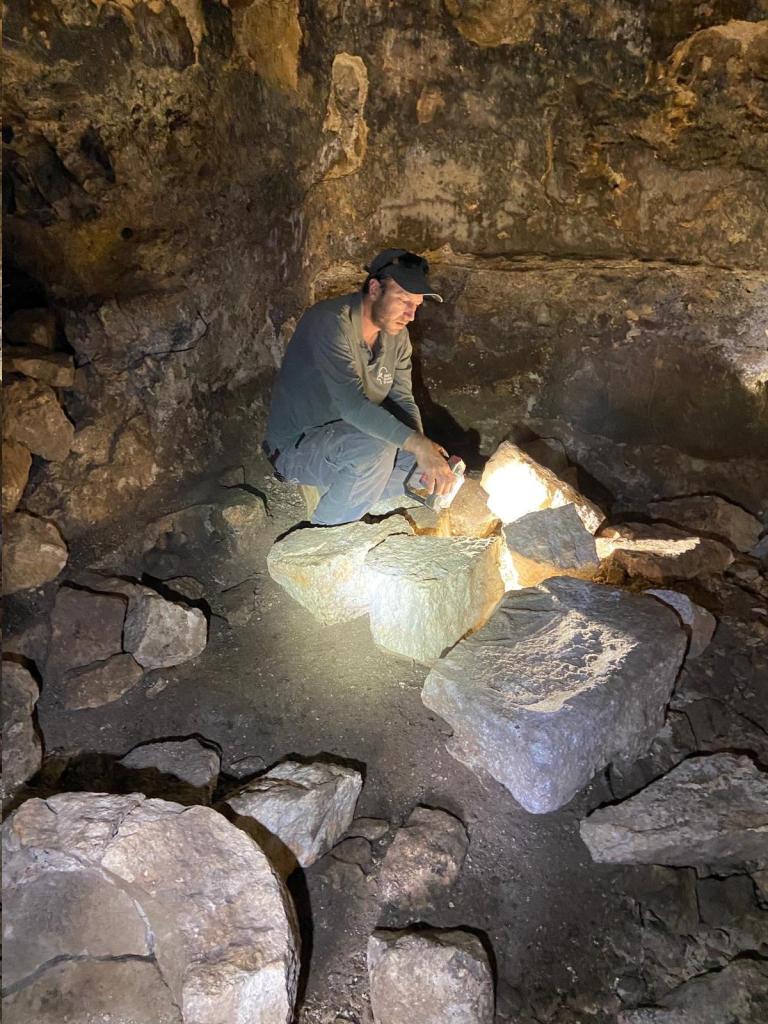
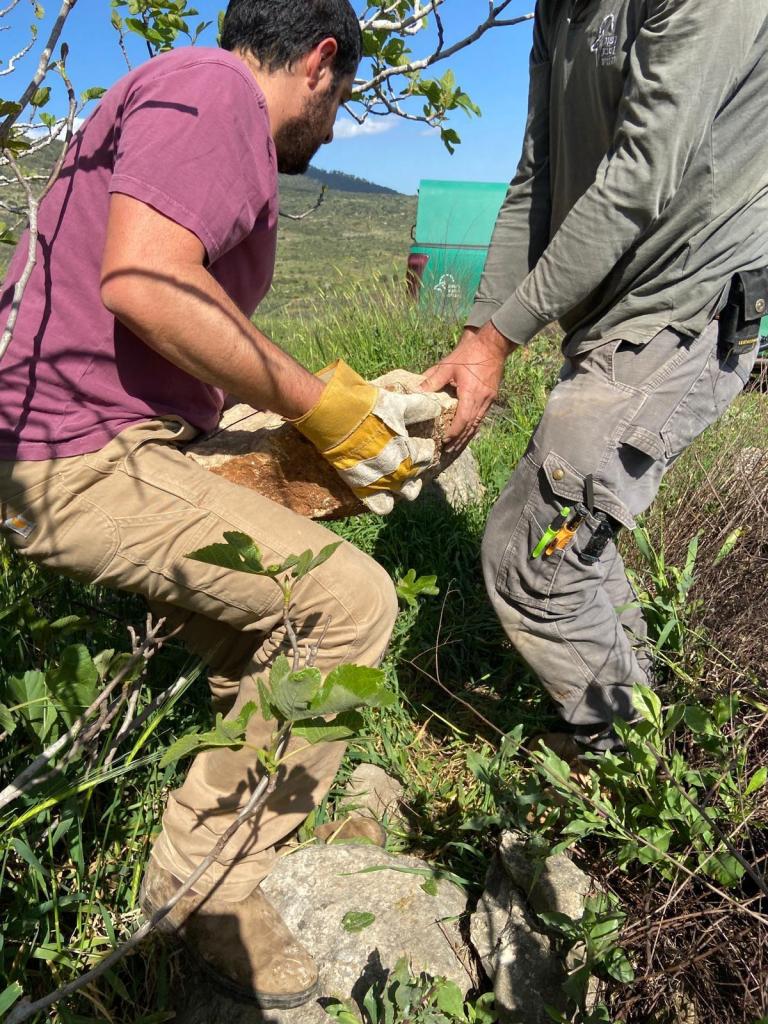
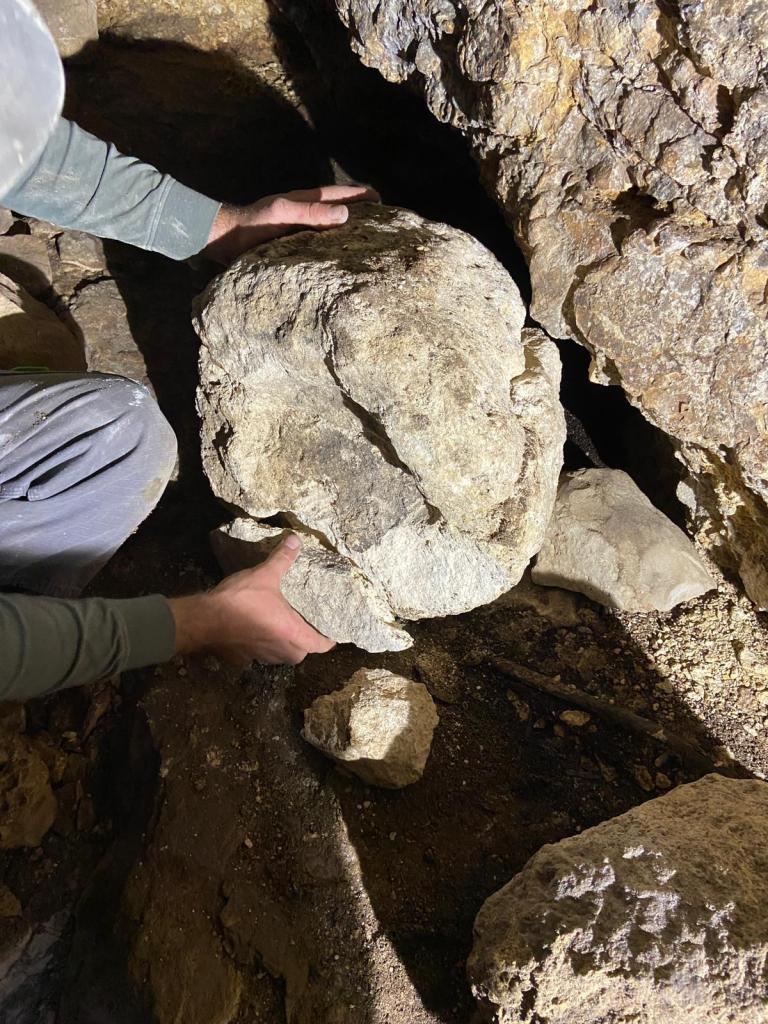
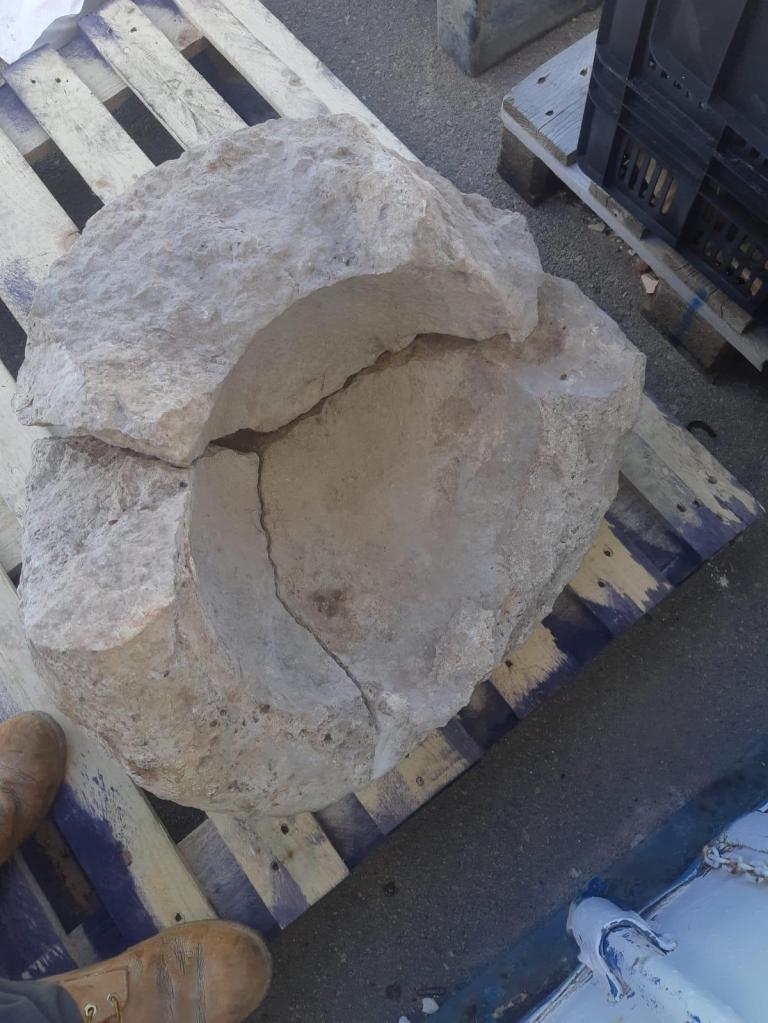

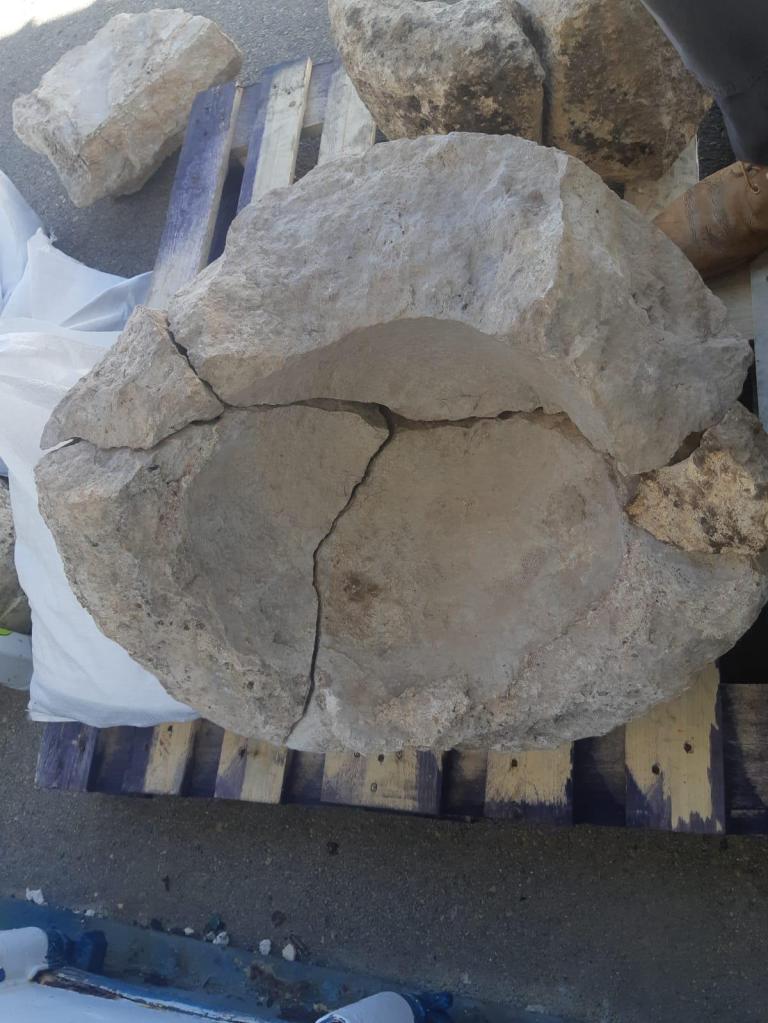
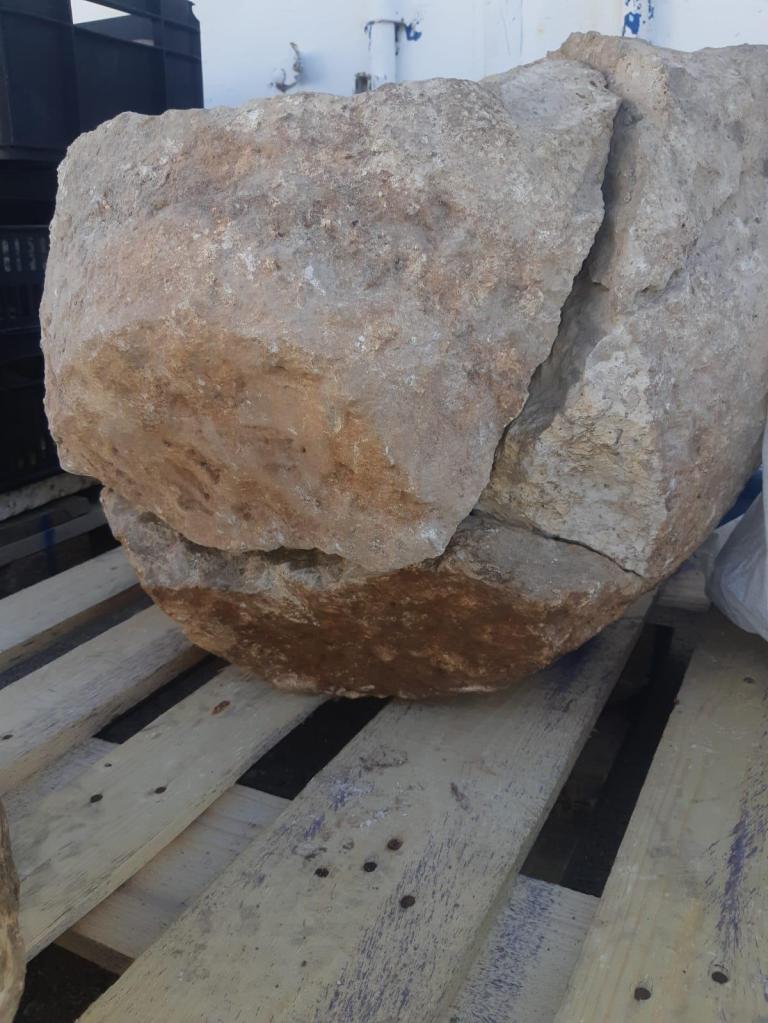
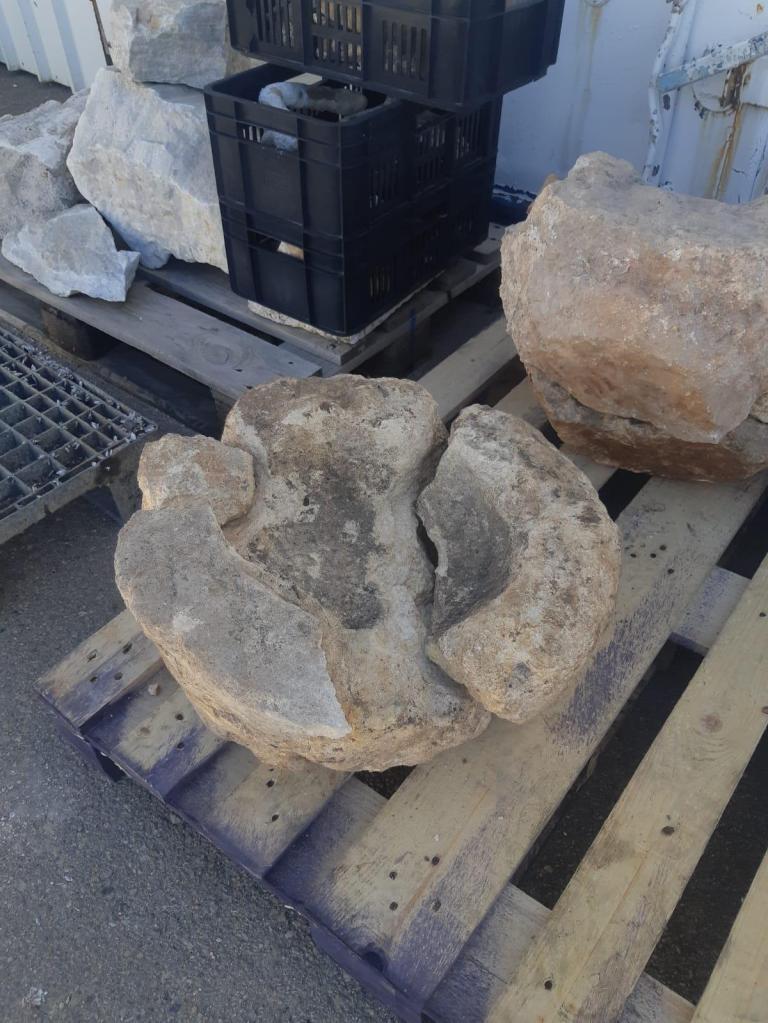


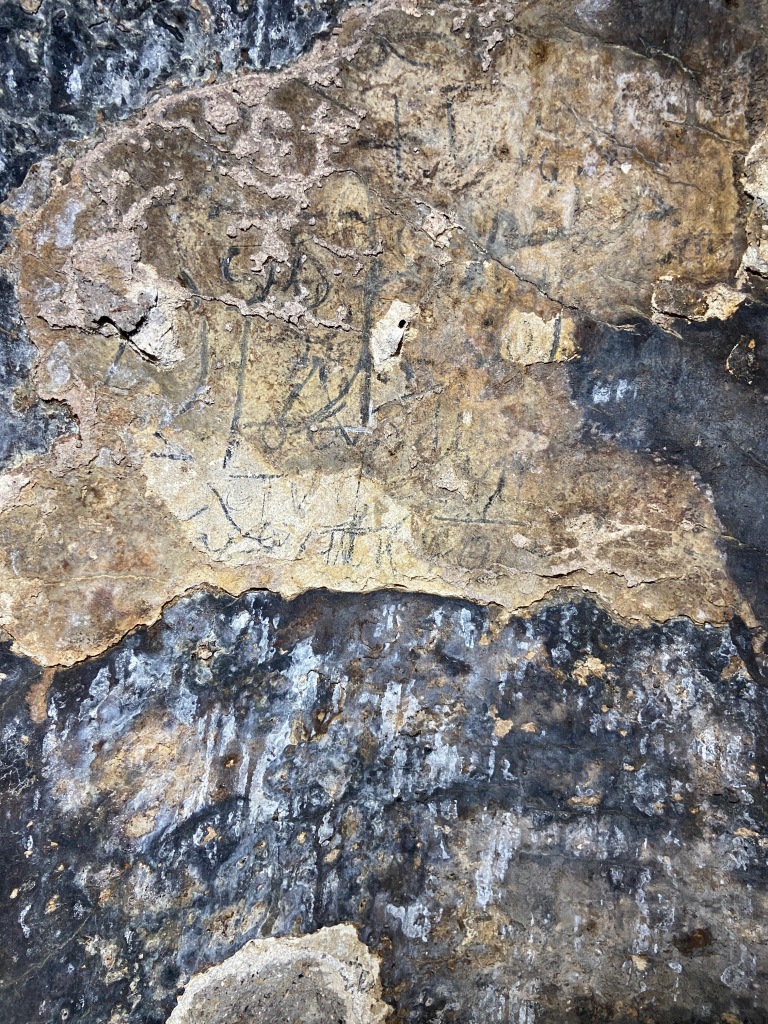
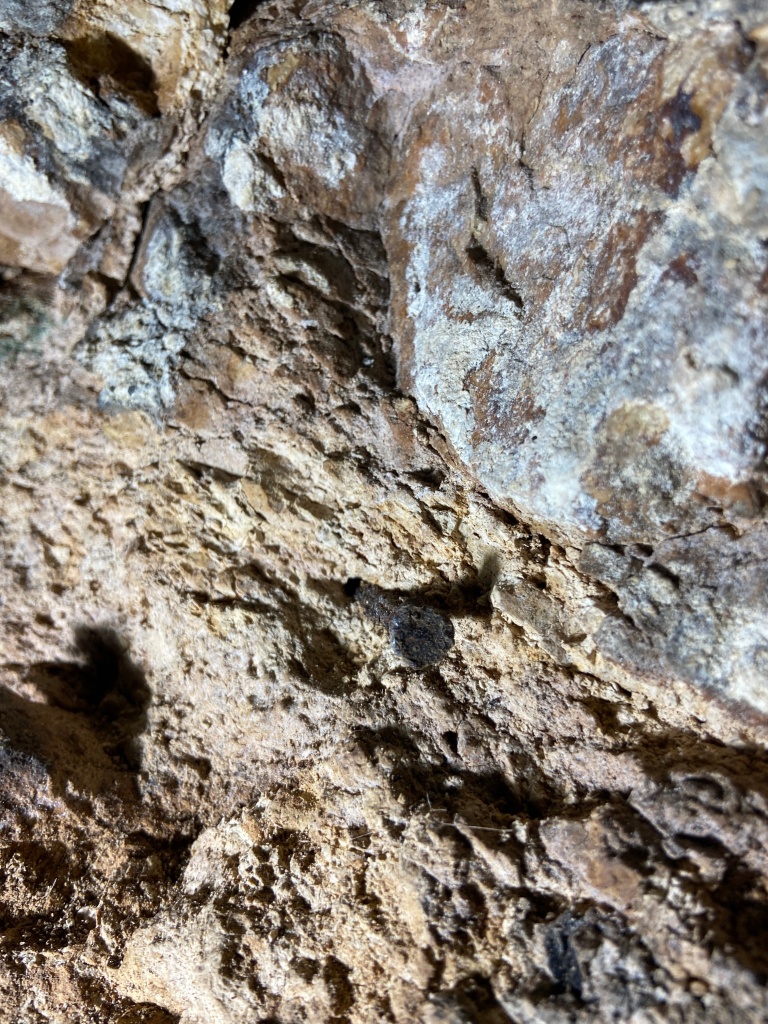

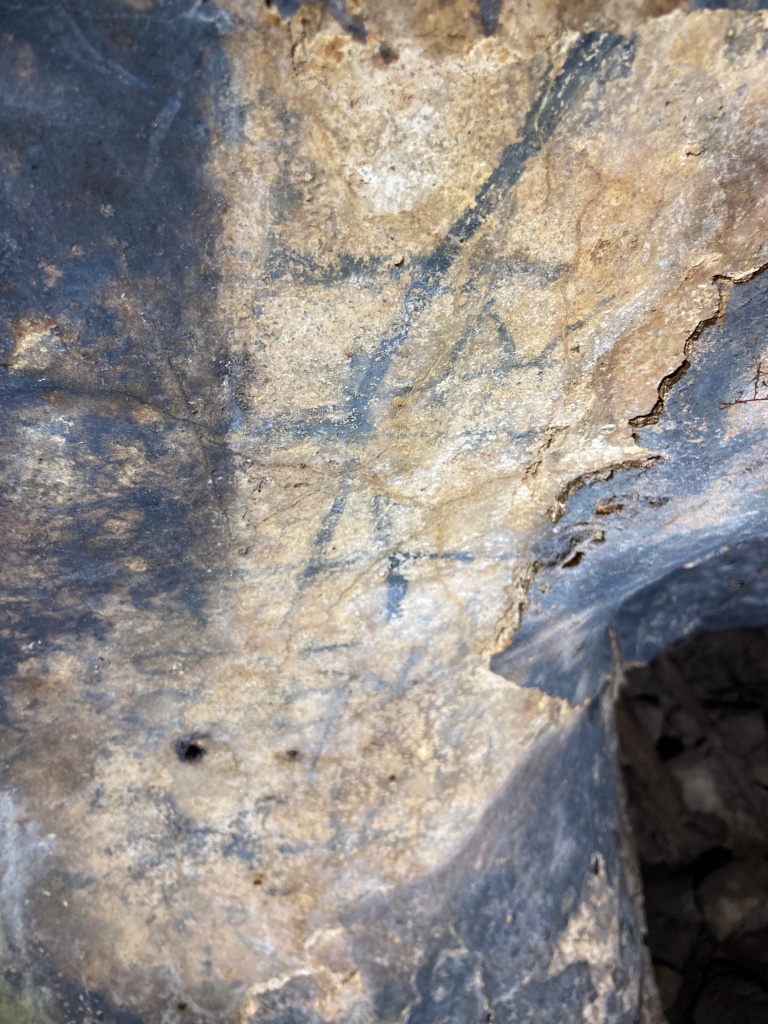
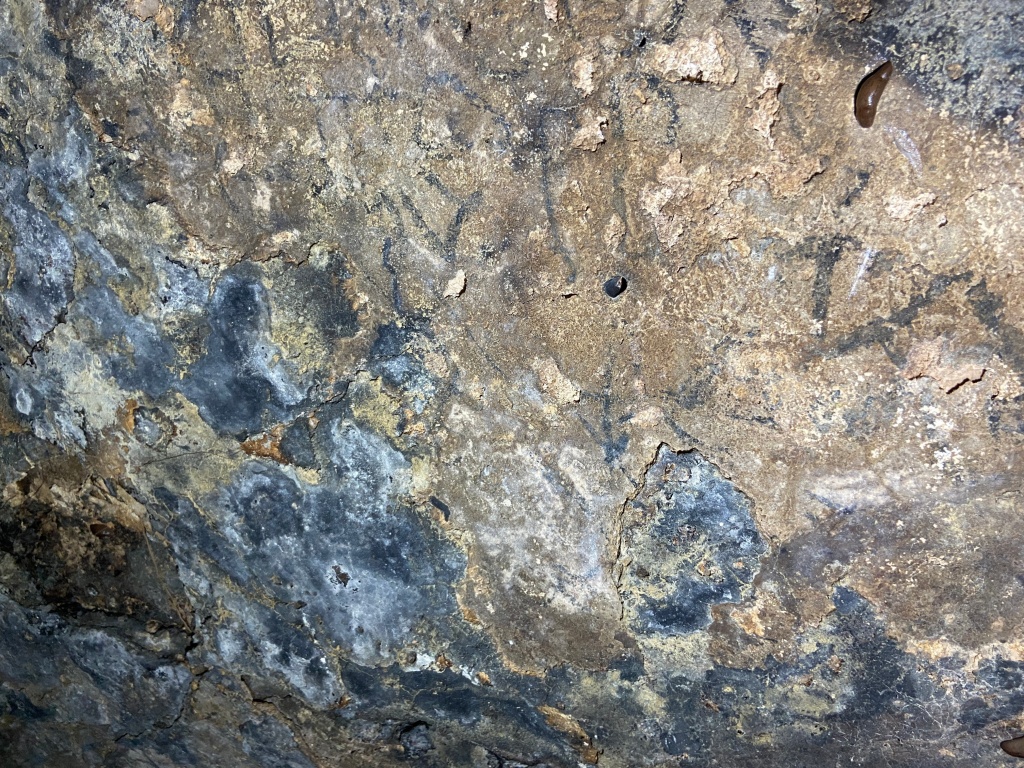

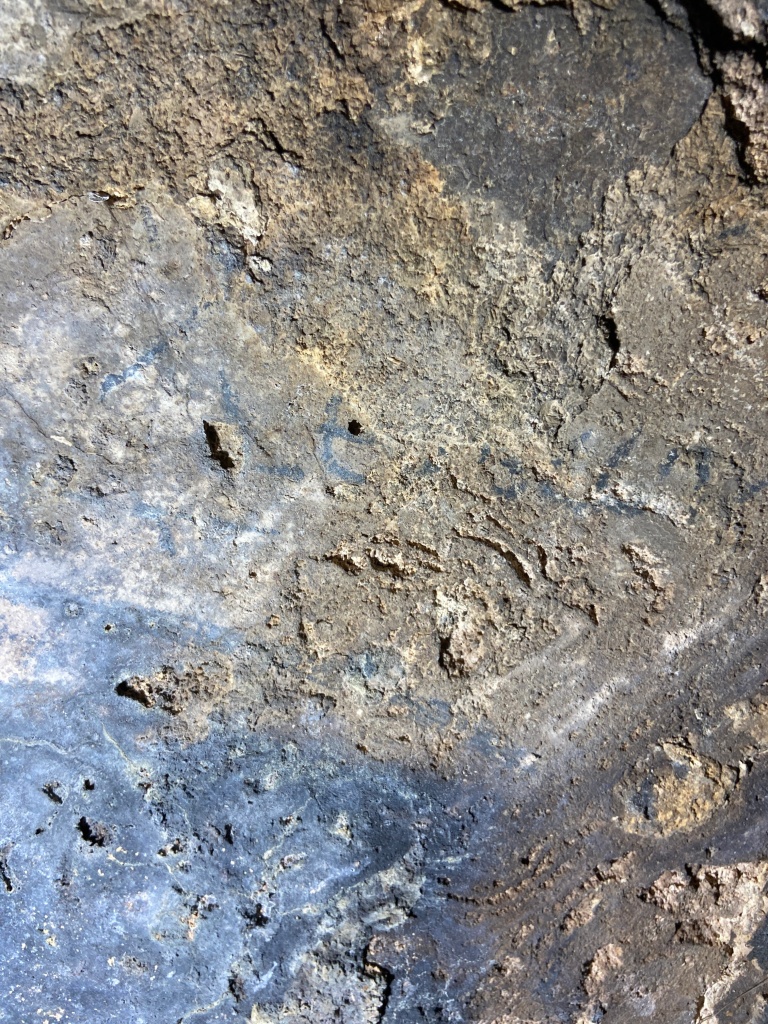

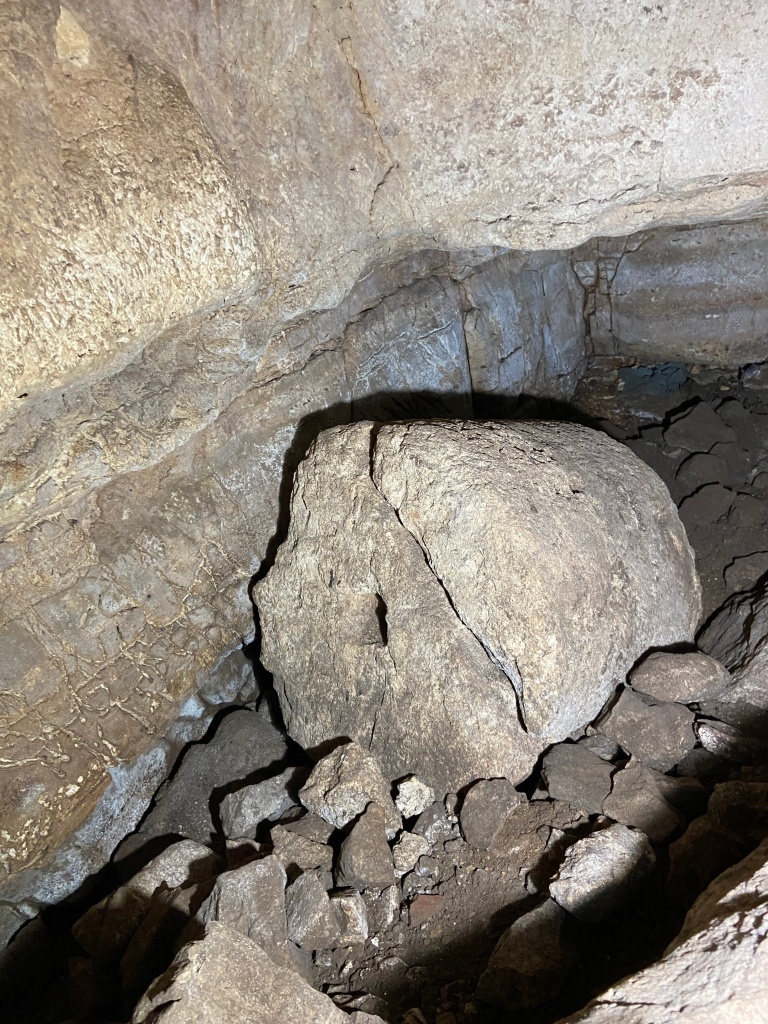

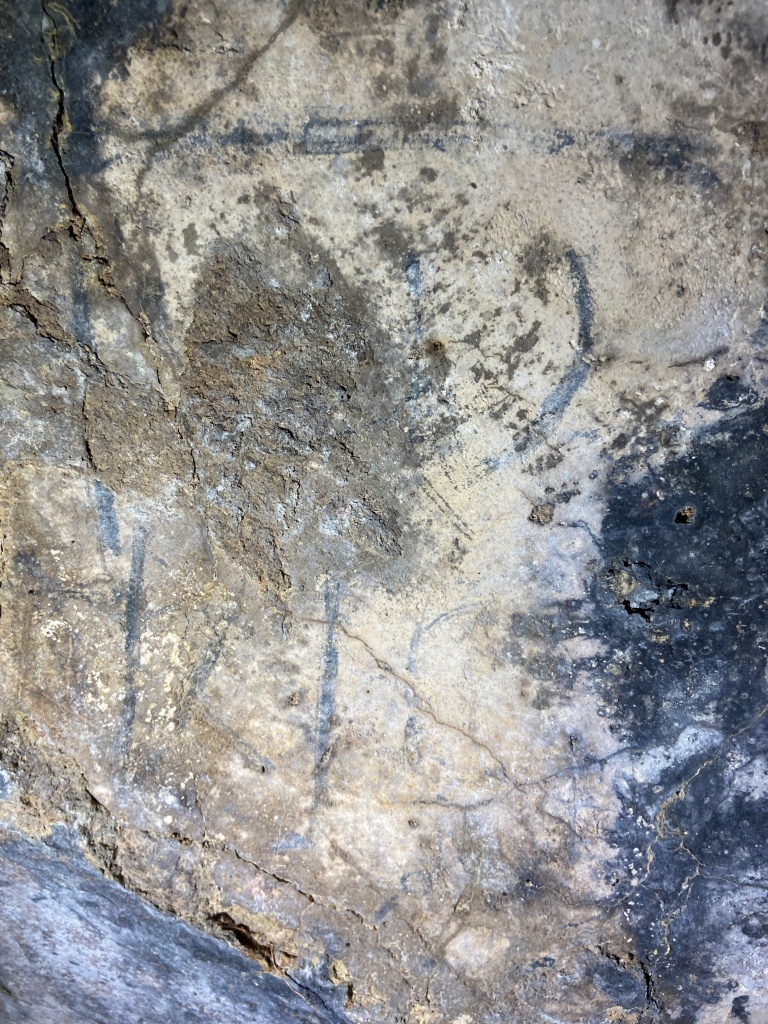
Lets end with a nice quote about Khirbet Qana:
Wady Jefât (Yodfat) comes down to, and then along the south of western base of it, and another deep ravine cuts it off from the general range on the north and north-east, and it is thus made to stand out like a huge tell.
1905 W.M. Thomson – The Land And The Book
…
There is not now a habitable house in the humble village where our blessed Lord sanctioned, by his presence and miraculous assistance, the all-important and world-wide institution of marriage. It is a sort of divine law of development to hide away the beginnings of things the most momentous in some almost undiscoverable point. This is an example. Innumerable millions in their happiest hours have had their thoughts and hearts directed to Kânâ. Poor little lonely thing! the proudest cities on earth might envy your lot. Nineveh and Babylon, and a thousand other names may be forgotten, but not Cana of Galilee. It may even come to pass that Paris, London, and New York will be dropped out of mind, and their very sites be lost; but to the end of time, and to the end of the world, whenever and wherever there shall be the voice of the bride and the bridegroom, then and there will Cana of Galilee be remembered. Some names we pronounce with honour, some with shame and sorrow, many with cold indifference, but Cana will ever mingle in the song of the happy, to symbolize the peace and purity of domestic happiness-the bliss of wedded love.
אראל עוזיאל – ereluziel@gmail.com
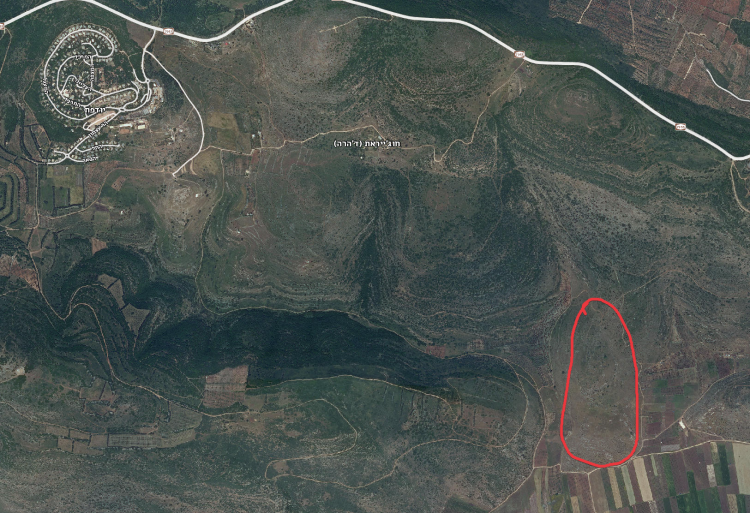
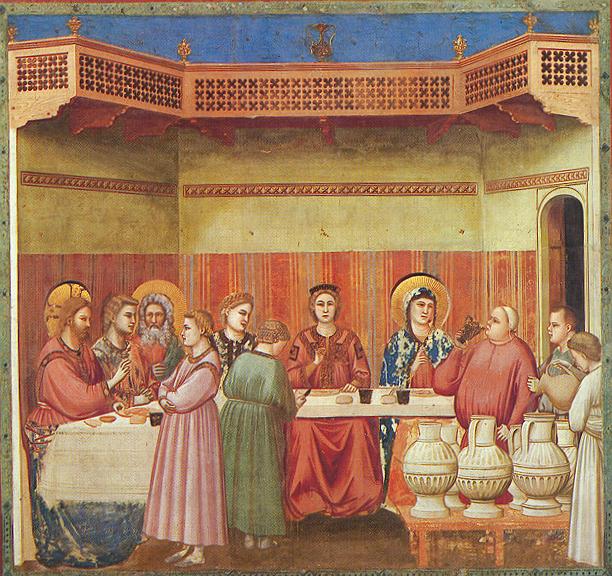
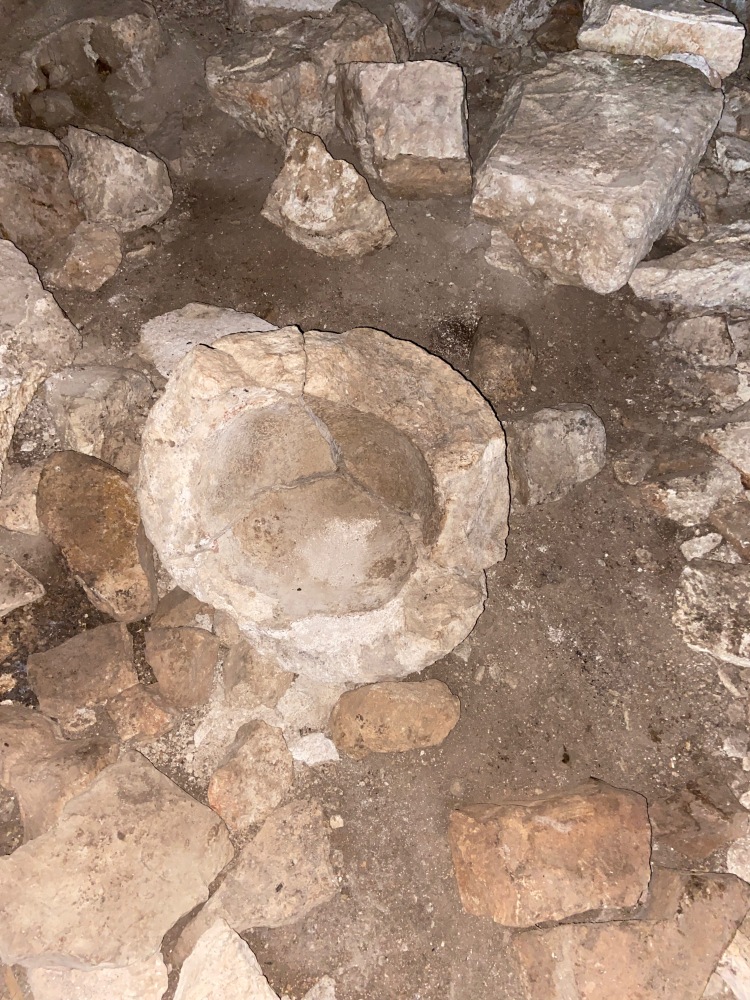
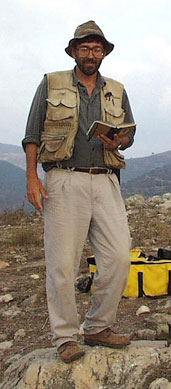
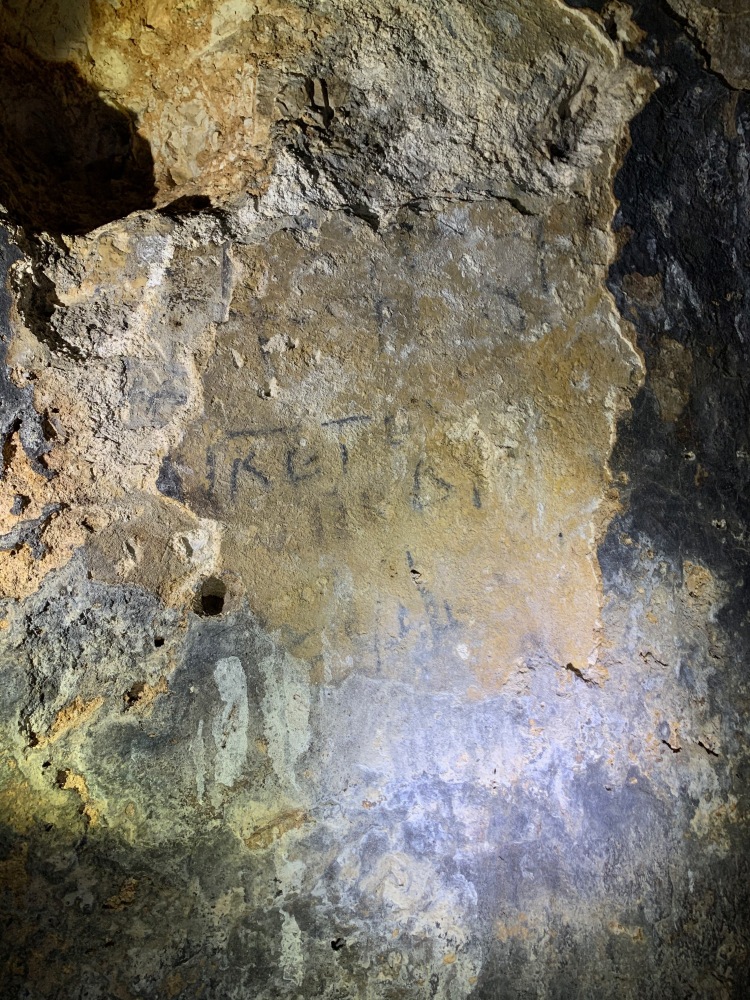
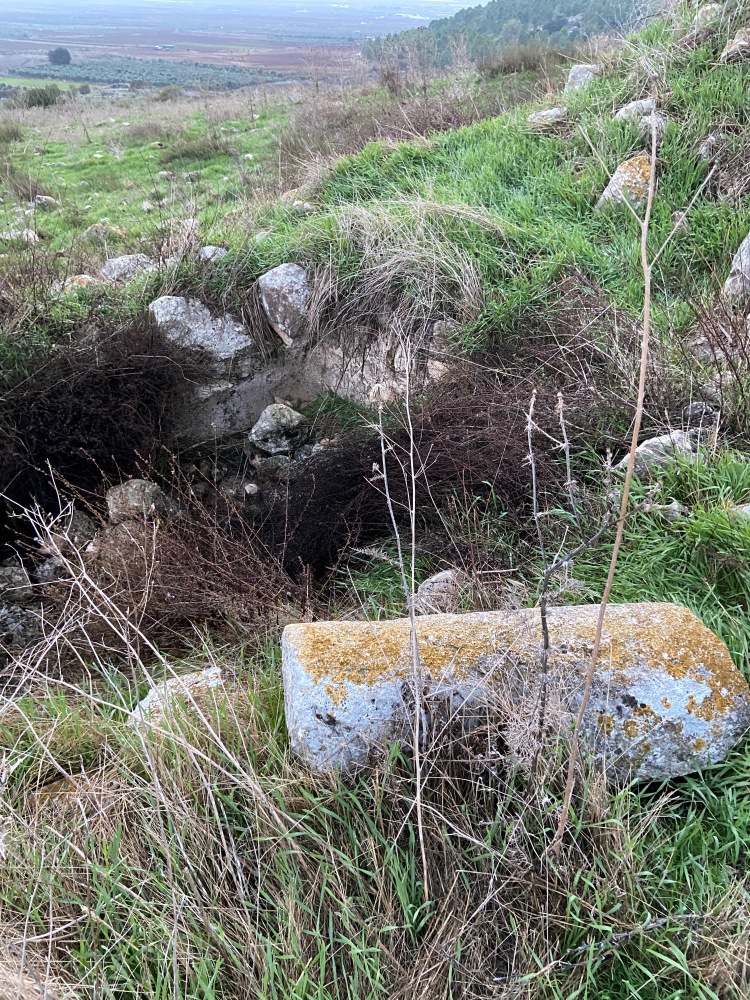
תגובה אחת על “Cana of Galilee”